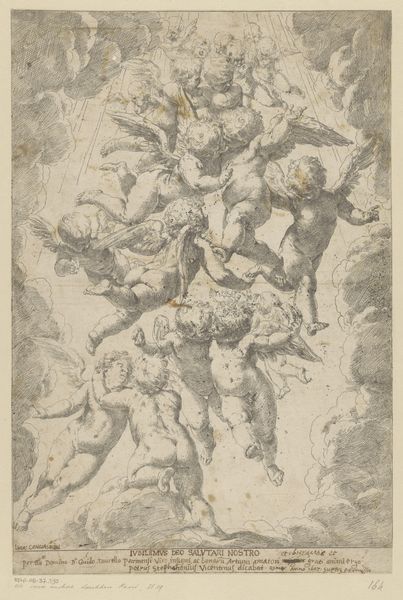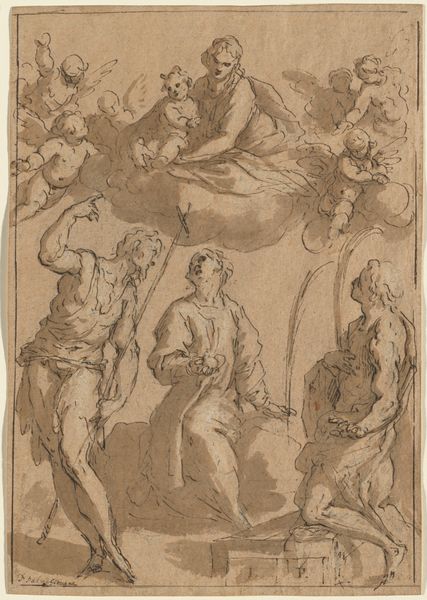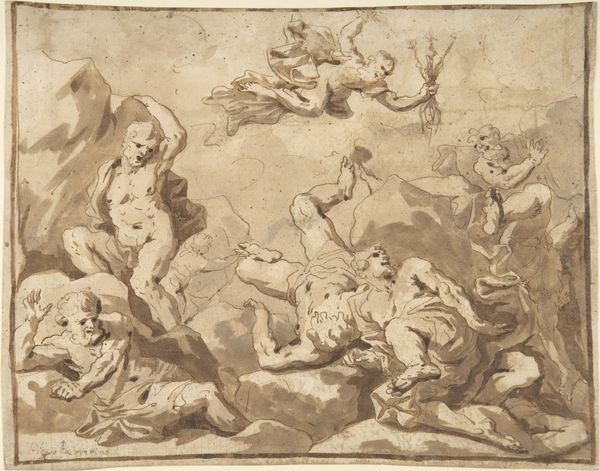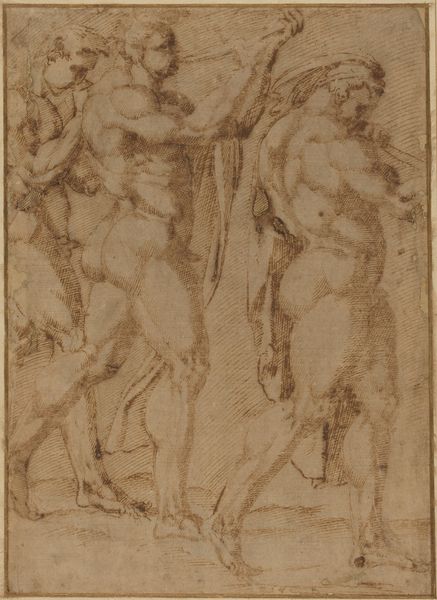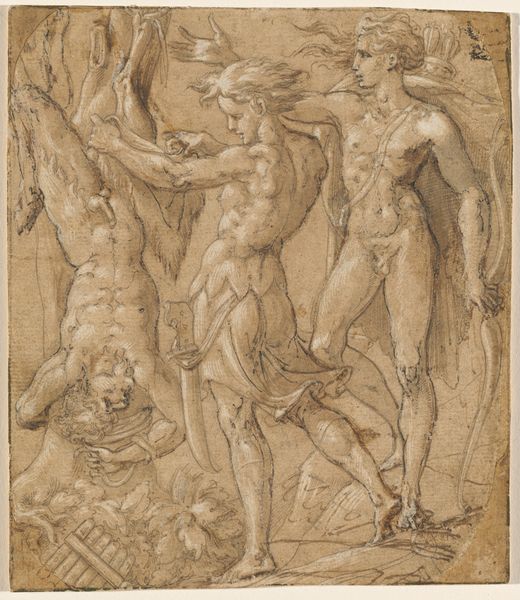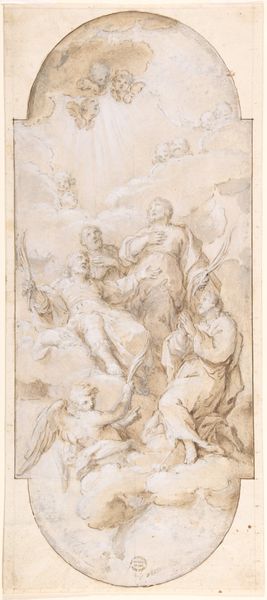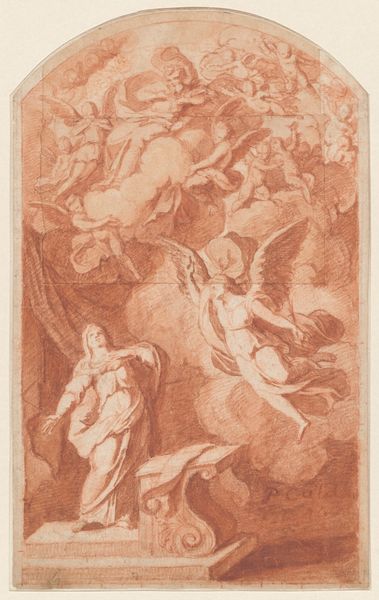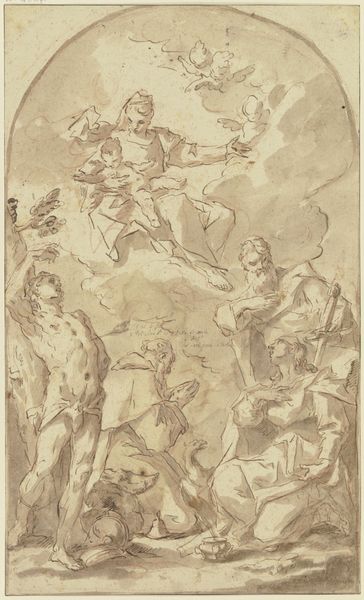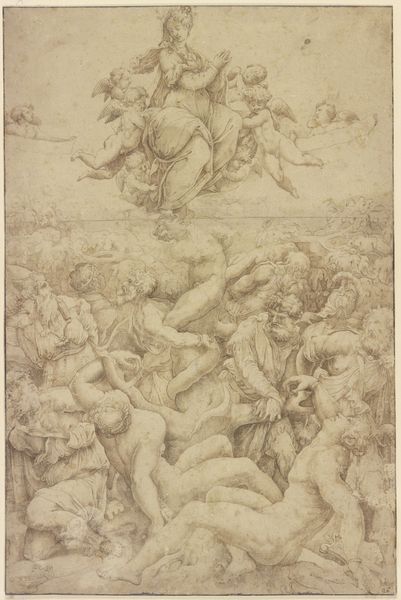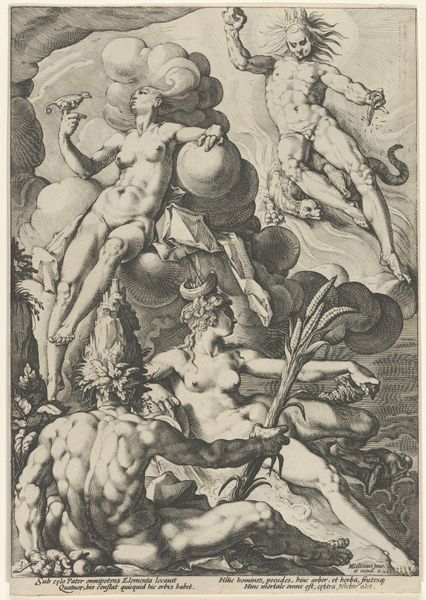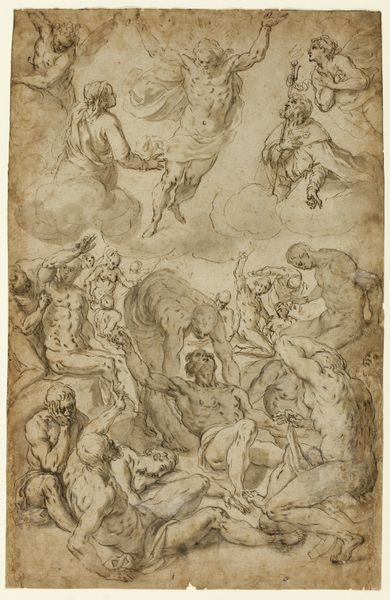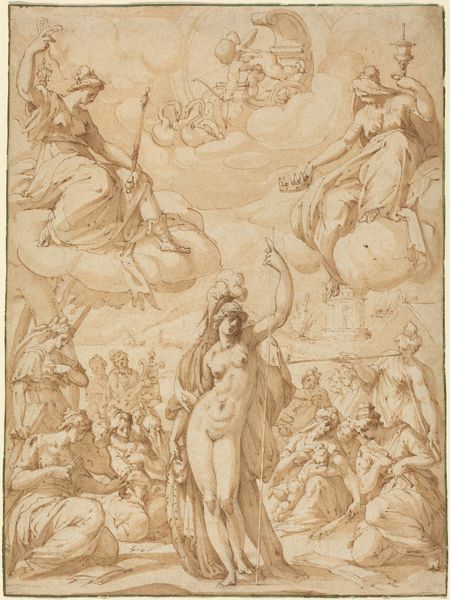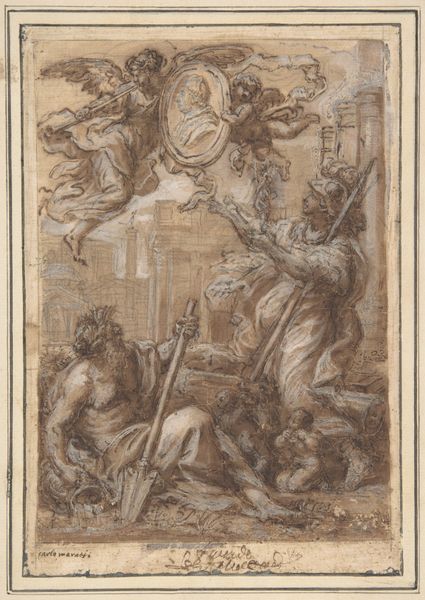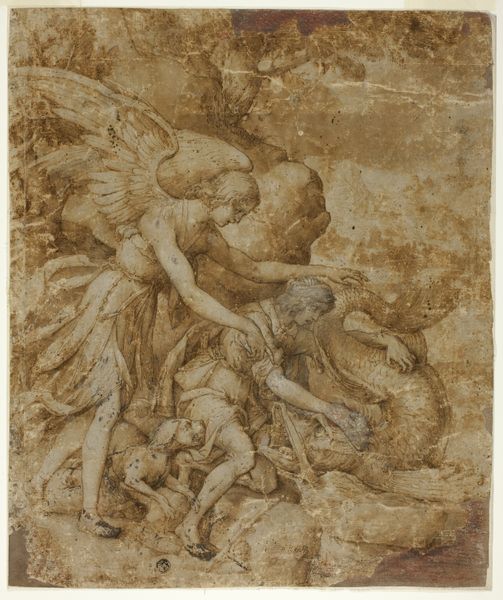
drawing, print, charcoal
#
drawing
# print
#
charcoal drawing
#
figuration
#
charcoal art
#
underpainting
#
men
#
portrait drawing
#
charcoal
#
academic-art
#
italian-renaissance
#
nude
Dimensions: 11 x 8 1/4 in. (27.9 x 21 cm)
Copyright: Public Domain
Curator: Editor: Okay, so this is "Figure Studies" from around 1600 to 1700, housed here at the Met, attributed to Eduard Dubois. It looks like it’s charcoal drawings and print work on paper, showing different figures in various poses. What strikes me is how much they focus on labor and physicality, but with a very classical almost academic rendering. How do you interpret this work? Curator: What interests me are the traces of labor embedded within the very process of its creation. Look at the charcoal, a product of burning, used to depict figures engaged in what appears to be strenuous activity. Is Dubois commenting on the act of making art itself as a form of labor? And consider the “print” aspect too. Was it a reproductive engraving, something to be widely disseminated? Who had access to images like these, and what did it mean to reproduce classical forms in multiples? Editor: That’s interesting. I was so focused on the figures, but thinking about the *making* as labor, as reproduction… How does the act of reproducing classical ideals change those ideals? Curator: Exactly! And think about the value assigned to drawings versus prints at that time. Drawings often seen as preparatory, closer to the "genius" of the artist, while prints facilitated broader consumption. What implications might that have? It really pushes us to consider these images within their specific economic and social context, beyond just admiring them for their technical skill. The charcoal is affordable for a mass audience to learn form. What could that audience learn, beyond basic aesthetics? Editor: It kind of democratizes art training, doesn't it? That cheap material makes instruction easier, as students are not precious with mistakes. They can afford to iterate! And print makes it more portable. I never thought about figure studies having that dimension! Curator: Yes, precisely. We can’t separate the 'high art' content of classical form from the material conditions that allowed for its production, circulation, and even popularization. Editor: This really makes you look beyond just "subject" or "style" of art and examine how artworks circulate in a society! Thank you!
Comments
No comments
Be the first to comment and join the conversation on the ultimate creative platform.
